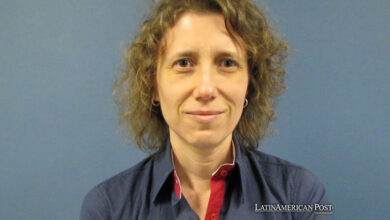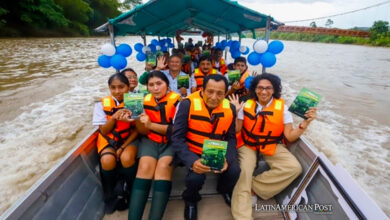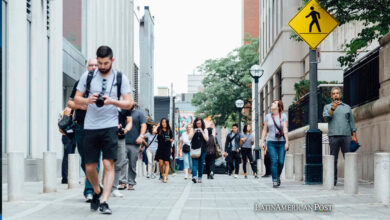Taking exams remotely: problems and solutions
The virtual course modality poses a great question for education: how to take exams? Here are some possible solutions.

Distance exams are a question mark for those taking virtual courses. / Photo: Unsplash – Tim Gouw
LatinAmerican Post | Ariel Cipolla
Escucha este artículo
Leer en español: Algunas soluciones para tomar examenes a distancia
Quarantine due to the coronavirus crisis raised new questions. First, many of the jobs we were used to, such as clerks, had to be done from home. That is, the home-office began to be an obligation in all those tasks that can be done remotely.
However, education was also affected … although it does not have to be a negative thing. That is, the teachers are also workers who saw that their routines changed from one moment to the next, having to plan classes for virtual infrastructures.
For example, the Infobae media mentions that the Argentine Catholic University (UCA) was one of the first to adhere to the system of virtual university courses. Despite the fact that content can be taught in different ways, educators still do not seem to agree on how to take exams online. Let's see, then, some possibilities.
How can distance exams be implemented?
To understand the situation a little, we can see some examples of the implementation of virtual courses. In this sense, we see that the website of the media of La Nueva de Bahía Blanca comments that the Universidad del Sur started using Moodle, an ideal tool to generate an online learning community.
However, the possibility of taking exams at a distance is restricted. Although the course can be interesting in terms of approach, the problem lies in how the contents are evaluated. If it is through a video call, how to ensure that the student will not copy?
Similarly, taking an oral exam in "real" time implies that all students have a webcam integrated into the computer, something that not many are interested in.
The other, more important drawback lies in surveillance. Taking an oral exam makes it impossible for teachers to see if the student is cheating or not. That is, you may be saying all the correct answers by reading them from the screen, so there is no way to make sure you are acting correctly in terms of morale.
The same would happen with written exams “in real-time”. One of these possibilities lies in generating a system where students have a time limit to answer questions. For example, the newspaper El Día de La Plata comments that the National University of La Plata (UNLP) of Argentina uses the “multiple choice” system, although this in no way prevents the students from being able to search for information on the Internet quickly.
Also read: Chatty kids do better at school
The other option is for students to “film themselves” by doing the exam on paper, with instructions that are given at the time, which they could then send to the teachers. However, problems also arise: how to ensure that the sheet they send is actually the one they wrote? How to secure all viewing angles to prevent copying?
The most effective method would be to change the way exams are made. Assuming it is a distance theory test, the student has answers at hand, which he can easily read. Why not complement this theory with a practical application that brings out the creativity of the student?
In case it is written, it will not be a problem that they cheat since the information will be legally available. In other words, the whole theory must be applied in a practical case, as if it were a classroom activity. For example, instead of asking Psychology students about Freud's statements, a case could be invented in which they explain the patient's mental process according to the theory at hand.
The best thing about this is that it can be done in writing, orally, individually or in groups. The intention is not that they repeat information that they have within a click, but that they can appeal to what they understood to apply it in a specific case.




